
Alex Pietrow describes the Game Boy Camera as “a monochrome, 2bit, 128×112 pixel CMOS camera from 1998 that was especially made to work with the Nintendo Game Boy. It is well known as the first affordable portable digital camera and was actually considered decent in its day.”
Now, nearly 20 years later, we have digital cameras that dwarf its capabilities. However, the venerable Game Boy cams are still readily available on the used market. As such, they are fun tools for experimenters to tinker with and use in ways that would likely surprise the original designers of this device. Pietrow, a master’s student in Astronomy and Instrumentation at Leiden University with a keen interest in old 8-bit games, decided to take this one step further and attempt to photograph celestial objects with it.
In addition to an academic interest in astronomy (he’ll soon be pursuing his doctorate in Solar Physics at Stockholm University), Pietrow gives tours of the Leiden University’s Old Observatory in the Netherlands, which was in use from 1860 to the 1970s and still houses its original telescopes. One perk of this job is that he can use the antique telescopes there for personal observation. Naturally, he set to work attaching his Game Boy Advance SP, along with its camera to an antique telescope, built in 1838.
Physically attaching the Game Boy to the scope was the biggest challenge of the build, since the camera doesn’t have a standard shape to fit into an eyepiece or normal photographic equipment, much less something built nearly 200 years ago. To compensate for this mismatch of parts, he squeezed the GameBoy into a mount meant to hold a phone, and lined it up after quite a bit of trial and error.
Another challenge to this build, is that the camera itself features only a 128 x 128 sensor—which is further limited to storing 128 x 112 pixels—and 2-bit color depth—which works out to only four grayscale values. Though this limitation is challenge in the sense of getting what most might consider “good” images, this type of limitation is a huge part of what makes hacking old hardware interesting and the results memorable.
The final challenge was the environment itself, which both amateur and professional sky observers are certainly familiar with. According to him:
The entire project took about 2 months, but mostly because bright, cloudless nights are rare and some trial and error. In a country with better conditions this should be a lot easier. This project made me appreciate the field of astrophotography more than before, as even seasoned photographers would have trouble with this. But it is great fun!
As seen in the photos below, the results are low-resolution, but spectacular for what they are. Due to a cloudy sky, the setup was first tested on a nearby church tower’s clock, which can be seen below next to a modern photo of it. In later photos he was able to photograph Earth’s moon, complete with craters.
Another photo seen here even allowed him was even able to pick out two of Jupiter’s moons, pointed out via red arrows in one of the images. The other dots in that photo are due to photographic noise caused by light pollution, which is a factor in any city.
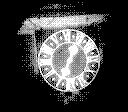


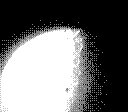
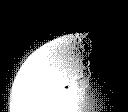
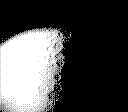
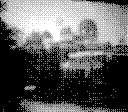
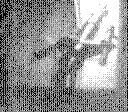

Though perhaps Nintendo would be surprised at this modern use, one could only imagine the disbelief of the telescope’s original creators, who constructed it in 1838. Future plans for this setup include observing the Sun through a filter, as well as Saturn, so hopefully we’ll get to see even more spectacular 8-bit space images in the future.
Perhaps we’ll even see more Game Boy telescope setup images or black and white selfies!
ADVERTISEMENT








